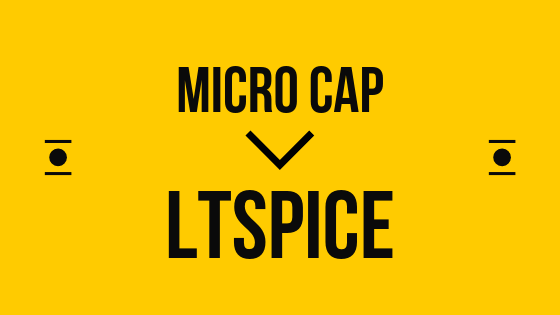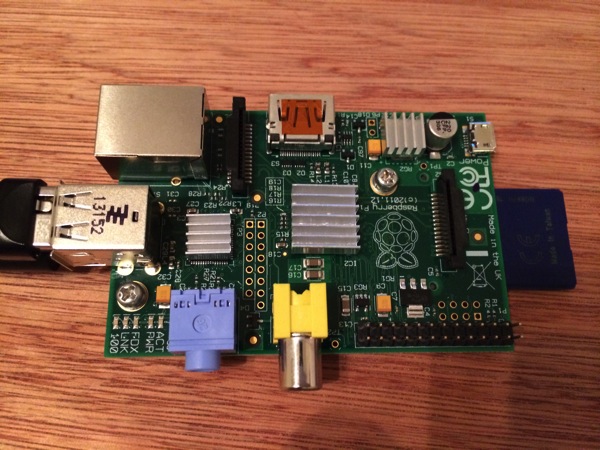Good evening, this is Bono.
Once again this year, I went to the annual Maker Faire.
We have compiled a list of ideas we found at that time that shine through with regard to manufacturing.
I would like to refer to it in the future.
コンテンツ
Smart Bottle Cap
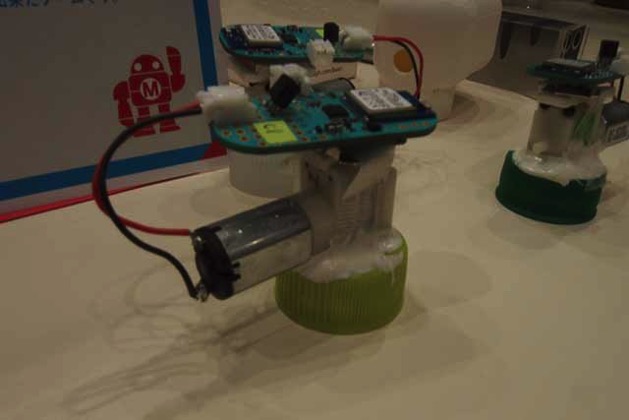
Personally, I was most shocked by what I saw that day.
This gadget is a smart version of a plastic bottle cap.
A flow sensor attached to the head measures how much contents have been discharged.
Using this, it is possible to take out a fixed amount of soy sauce without using a measuring spoon, for example, when measuring 10 ml of soy sauce for cooking or milk for children.
It can also be linked to a smartphone to serve juice for the amount of calories consumed, etc.
Hats off to an idea that has a wide range of applications and also makes the little hassle I've had to do in the past a lot easier.
The amount of time is measured by a flow sensor, and the accuracy is 3%, which is better than expected.
Although mass production does not seem to be in sight yet, we look forward to future developments.
Postel
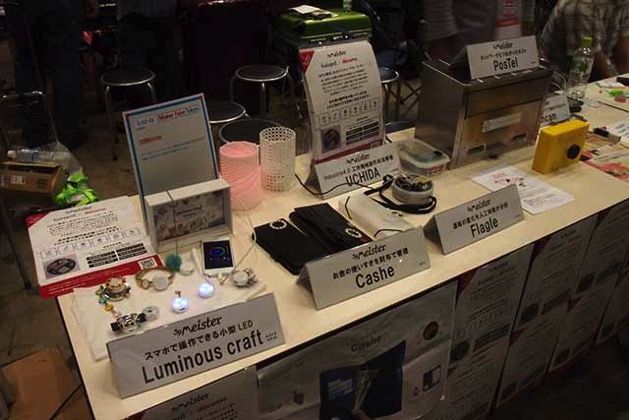
The gadget on the right side of the photo is called Postel.
The idea is to smarten up the home delivery post.
It was created to eliminate the wasteful process of posting an absentee slip, requesting re-delivery, and then having the package re-delivered if the customer was not at home to receive it.
The gyro sensor is placed at the mail slot, and the camera with EyeFi is placed inside the mailbox.
The system uses a gyro sensor to detect when a mailbox is dropped, automatically takes a picture with the camera, uploads it to the cloud using EyeFi, and notifies the smartphone that the mailbox has been dropped.
We also heard that this could be applied to detecting flyers being dropped in the mailbox and to prevent stalkers from vandalizing mailboxes, etc.
Following the smart bottle cap introduced above, this will be a gadget that tips its hat to the idea.
What's even more interesting here is the use of 39Mesiter, a service that supports startups.
family home alarm
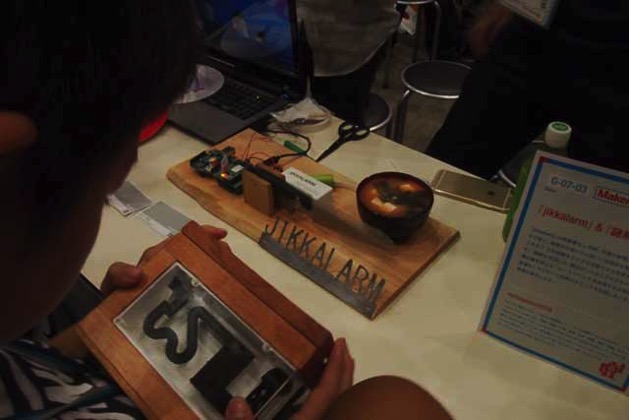
An alarm that wakes you up as if you were at home.
What a surprise, the sound of a real kitchen knife tapping on the cutting board and the aroma of miso soup replicating the smell of miso soup make you feel as if you are at home.
There have been many alarm gadgets that force you to shake your watch several times to stop, or move away from the futon to a certain location to stop, and so on.
However, there are few alarms that "wake you up comfortably" like this one (or even if there are, high school girls wake you up over the phone), so this was a hit for me personally.
The other customers seemed to like the product as well.
The fact that the sound was made realistically using a real kitchen knife is also a high point.
storm glass
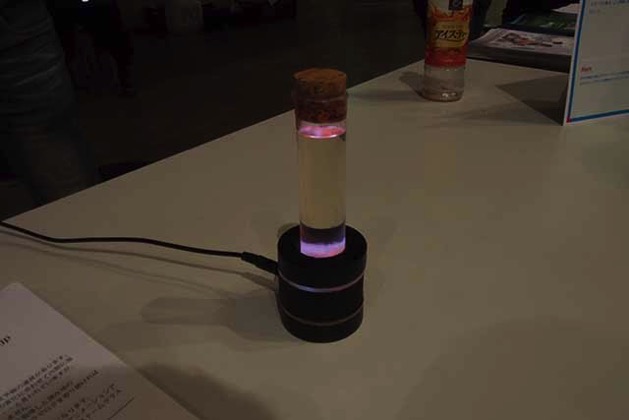
An interior called Storm Glass, which tells you the air pressure and temperature.
By mixing several chemical materials such as ethanol, it is possible to create a material that crystallizes differently depending on the atmospheric pressure, which can then be used to determine the approximate atmospheric pressure.
This is a technology that was actually used in Europe and elsewhere.
By acquiring the temperature from the Internet, the gadget changes the color of the LEDs and seems to be arranged in a modern style.
The configuration is made up of an Arduino Pro mini and a temperature sensor called LM35DZ.
ISS Globe
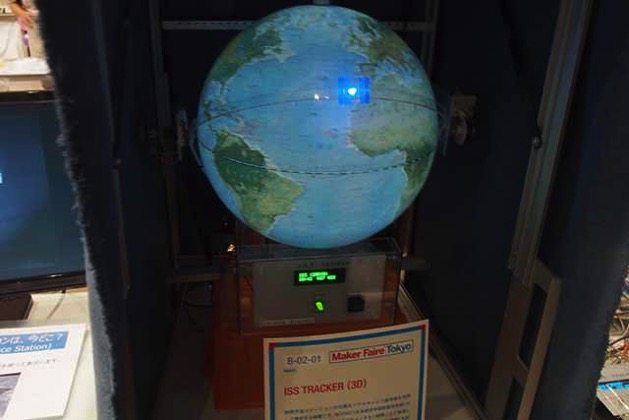
A stylish globe that shows the position of the International Space Station (ISS) in real time.
It was introduced as a good interior design on some blog and I was curious about it before I went there.
I could see it in person and thought again that it would indeed fit.
Incidentally, two stepping motors are used (for X and Y axes), and they are actually moved not in real time, but with a click, click, click at each fixed angle.
I didn't know that ISS information is also available to the public.
I was mesmerized by the grand scale of the event.
Roomba DJ
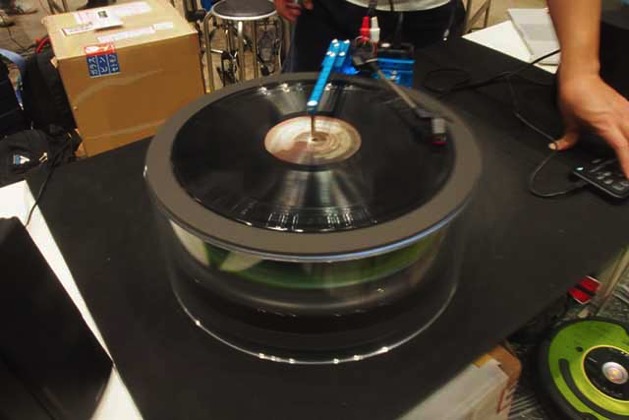
It is a gadget that makes use of the Roomba for luxury.
The rumba is rotated, and the disc on the record rotates accordingly to play the music.
Practicality? But the idea and the execution of actually making it is amazing.
I couldn't ask how it works, but I learned for the first time that it can move the Roomba freely, so it would be interesting if it could be applied to other things as well.
(We don't have a Roomba, but...)
Fan instrument
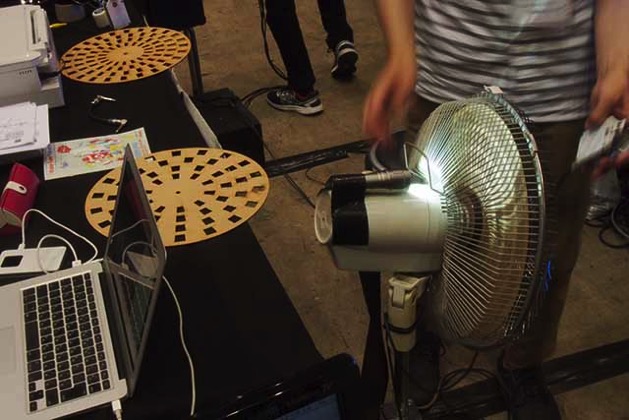
For some reason, even nowadays, fans always appear at these electronic construction exhibition events.
This is one of them. The idea is to make a musical instrument by rotating a disk-shaped piece of cardboard with several slits in it and converting it into a musical scale by reading its period.
The slow speed inside the disk and the high speed outside the disk create a difference in the period, which seems to be able to create a musical scale.
drone race
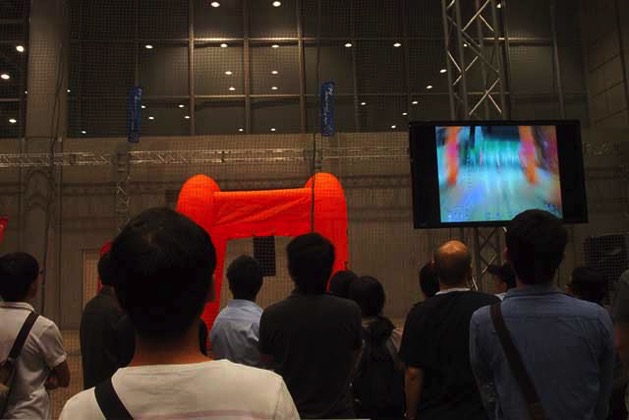
This is not electronic work, though.
I had seen them on YouTube, but this was the first time I had seen them live.
It would be a stretch to say that it was just a radio-controlled drone, but it was still amazing to see how skillfully the drone was manipulated.
It was satisfying to see a professional who specializes in acrobatics.
(You can hardly see the drone in the picture...)
Video changes in time with the drums.
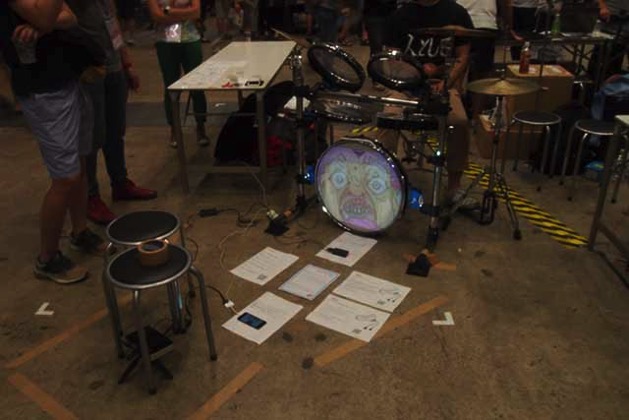
The image on the drum changes in accordance with the tempo of the drum.
Although the mechanism seems simple, I thought it would be very interesting to combine it with live performances.
radio wave model (model of radio waves, etc.)
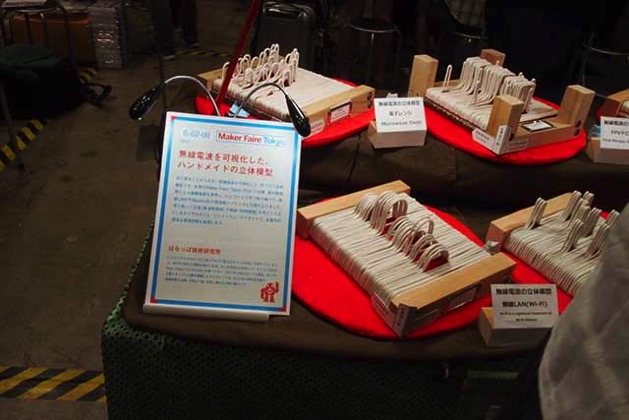
This is just a model, but it is a work that was quite geeky.
What a great reproduction of the radio waves!
The model represents the radio waves emitted from products such as cell phones, WiFi, microwave ovens, etc., in a spectrum analyzer-like manner.
From the looks of it, each wire seemed to be made of thick wire, about 10 wire thick.
Hats off again to the attachment to the radio waves.
Mr. Thesis Mamoru.
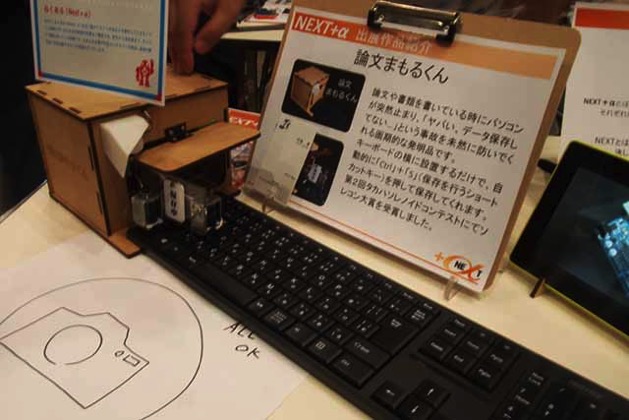
The idea was interesting.
This is a gadget that solves the problem that everyone may have experienced: the PC freezes and the document you were writing is lost.
What a surprise, this is the one that automatically presses Ctrl+S on the keyboard and saves the file on a regular basis.
It seems that actually pressing the keyboard would require quite difficult control and configuration, but I was impressed by the fact that even such a small idea was given a proper form.
Candy vending machine
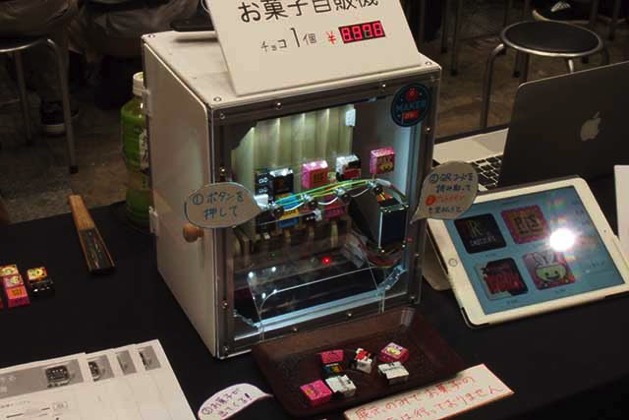
This is a vending machine for candy using Raspi and Bitcoin.
He said he really wanted to try Bitcoin, so he thought of this gadget.
The mechanism is as follows: select a candy from the vending machine's touch panel → automatically transfer money in Bitcoin → Raspi connected to the Internet acquires the money → Raspi operates the motor to drop the candy.
I felt that this could actually be operated for products with a small per-unit price, such as Tyrol Chocolates, and I saw future possibilities.
electric (light) bulb
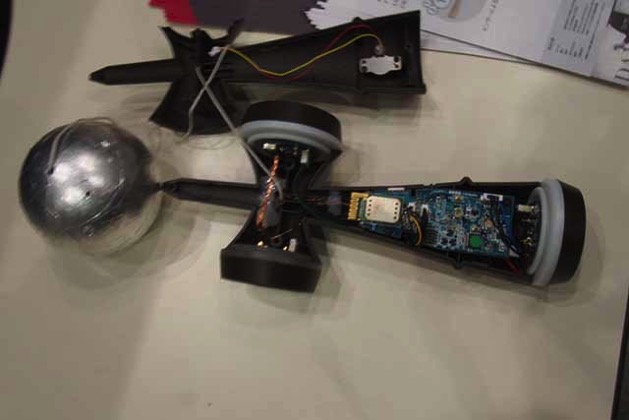
This gadget is a smart version of Kendama.
It seems that the part of the ball is made of metal (aluminum foil) and a coil is installed in the body part to detect where the ball is placed.
This allows multiple players to enjoy kendama in a competitive style, using the monitor to compete with each other in techniques.
I used to play kendama myself until I was in elementary school, so I was even a little impressed by the evolution of the game in this modern style.
They are preparing for crowdfunding.
Finally.
Overall, I still feel that IOT-related activities were a lot of fun.
The booth was also the largest available.
I also realized that there are many more ideas for IOT, such as plastic bottle caps, delivery posts, and kendama (a Japanese game of gobball).
There are still opportunities for everyone, depending on the idea.
As for microcontroller boards, Raspi still seemed to be the most popular, followed by Arduino.
Leap Motion was used surprisingly often as a sensor/module.
Other items seen here and there included hue lamps, Ricoh Theta, and others.
Projectors are another standard item.
I did not see any kinect at all, which was used well for a while.
 Start electronics
Start electronics 
